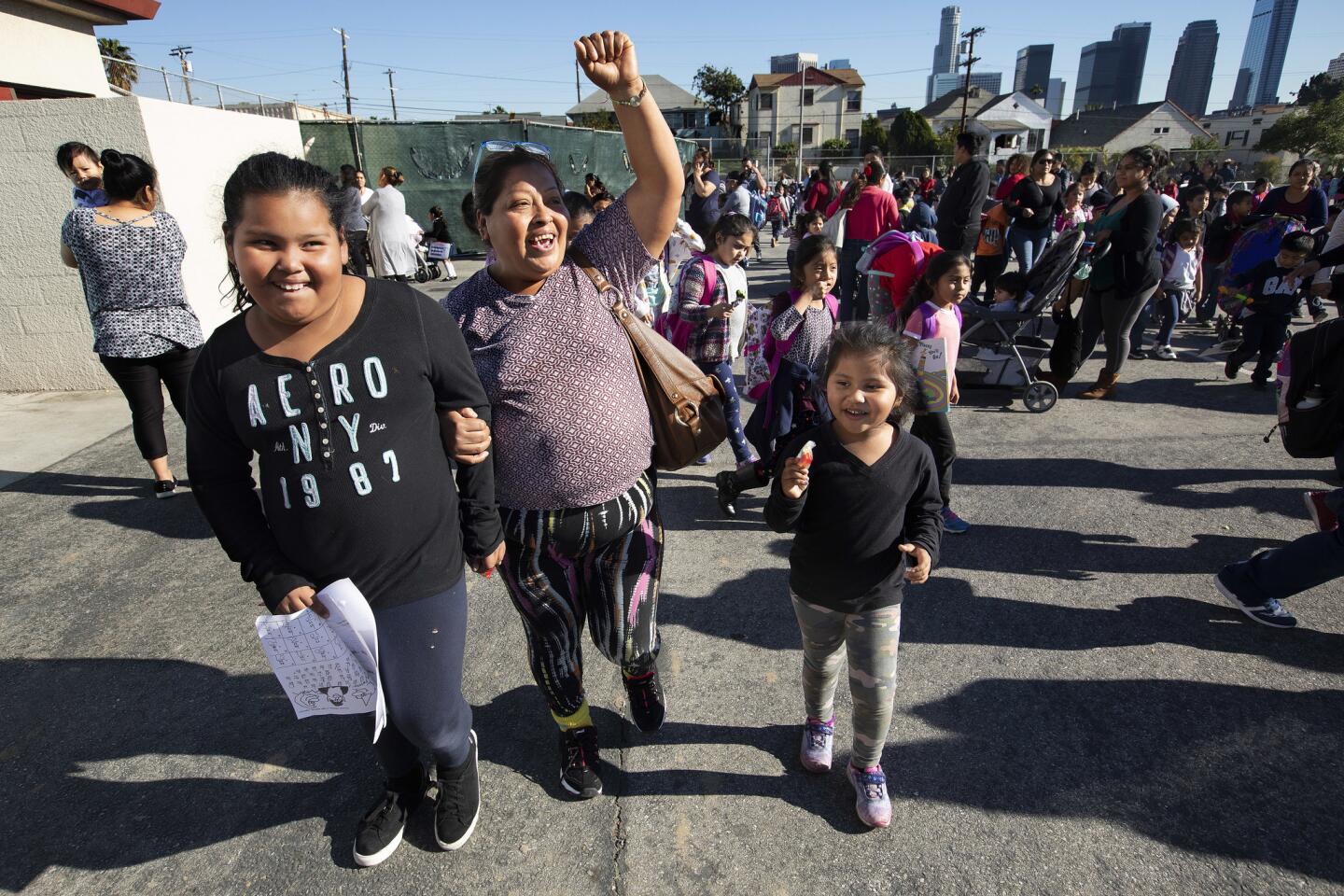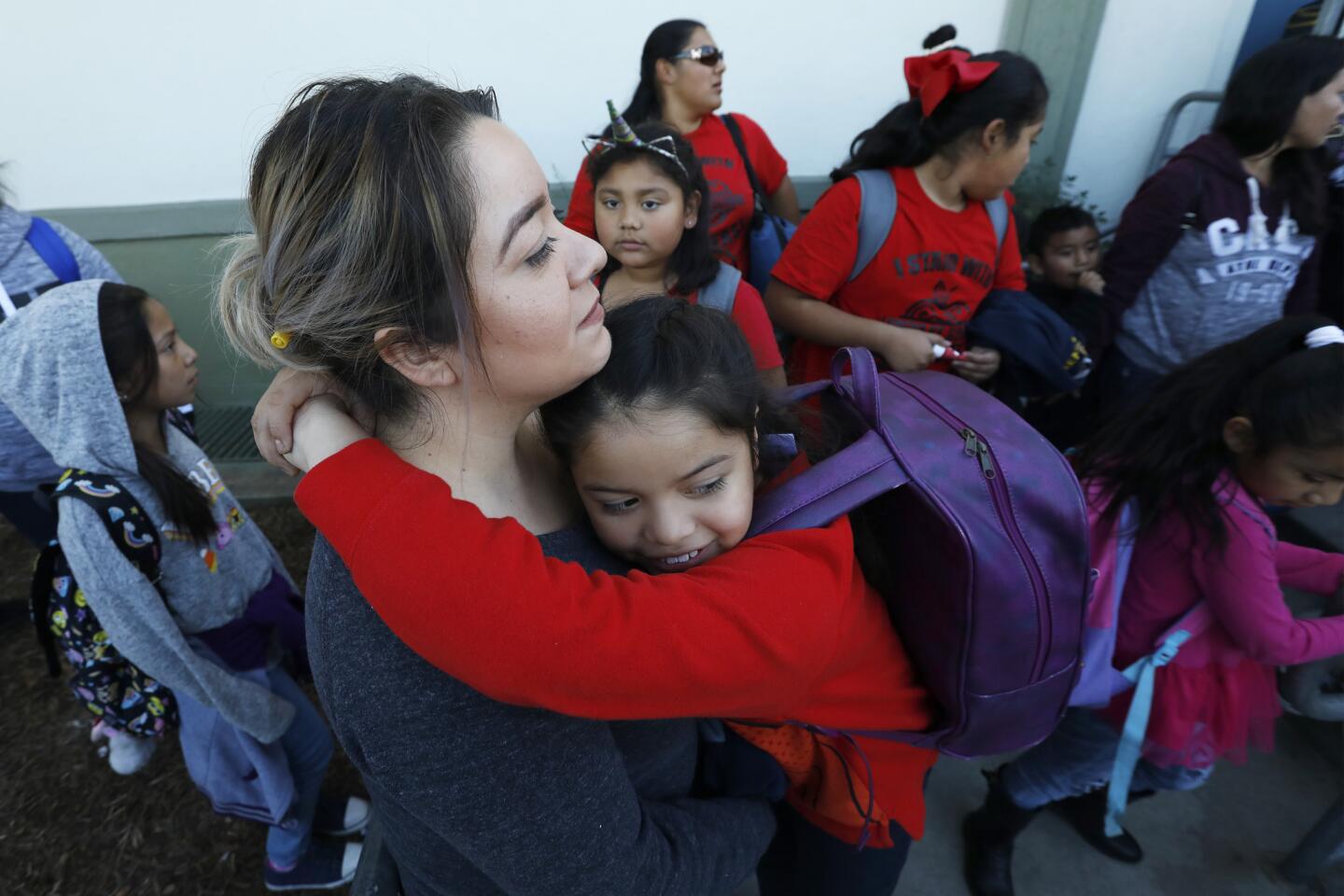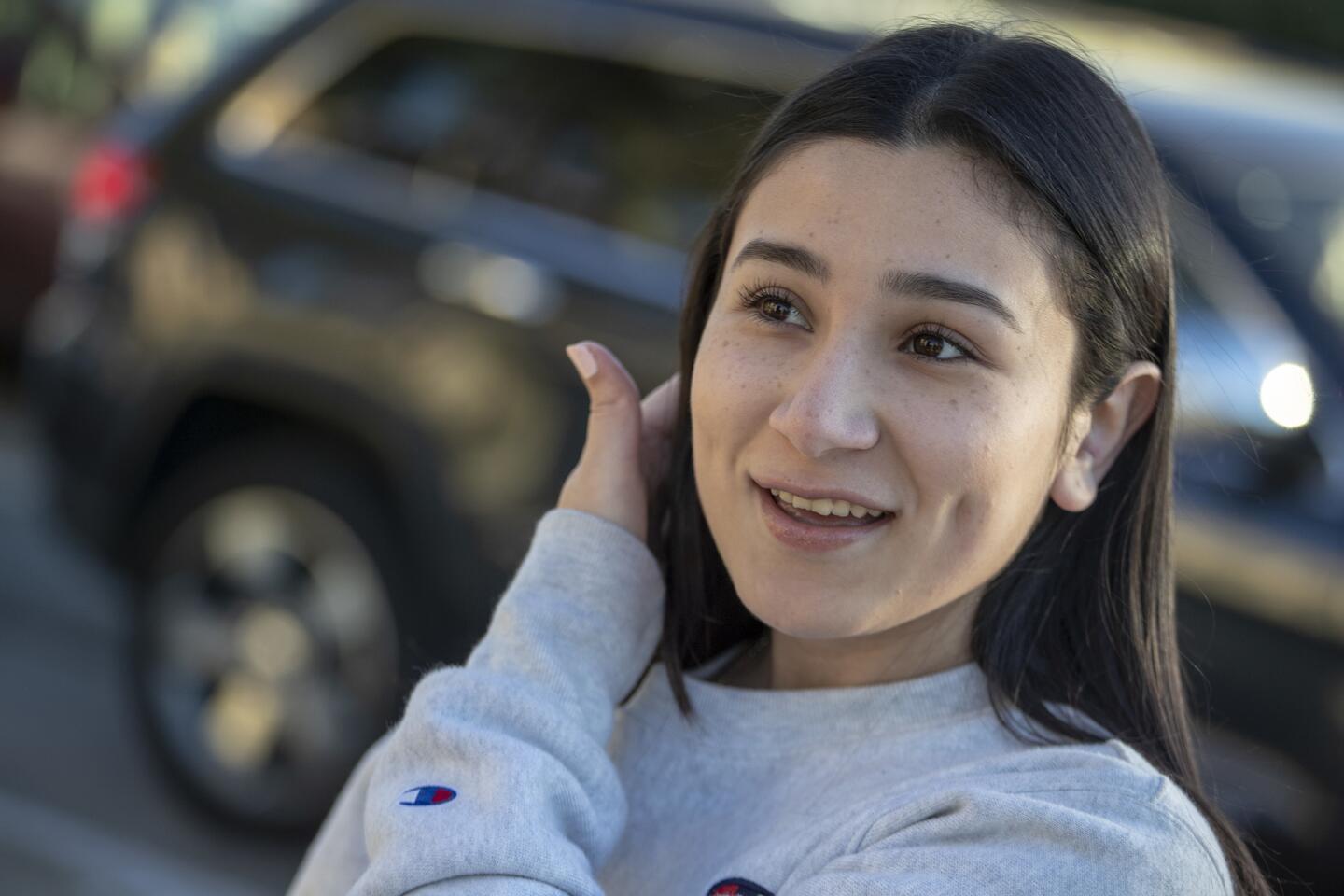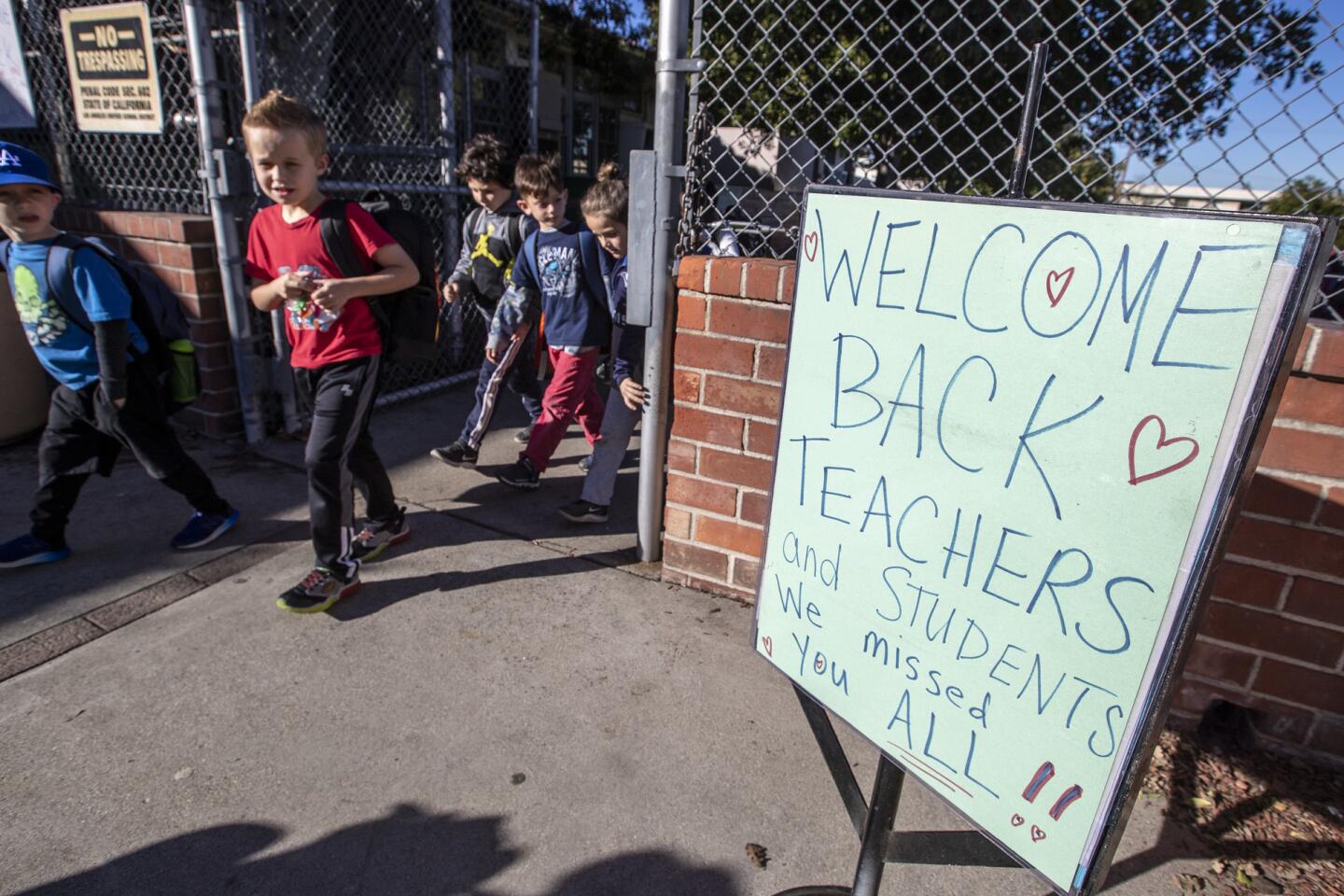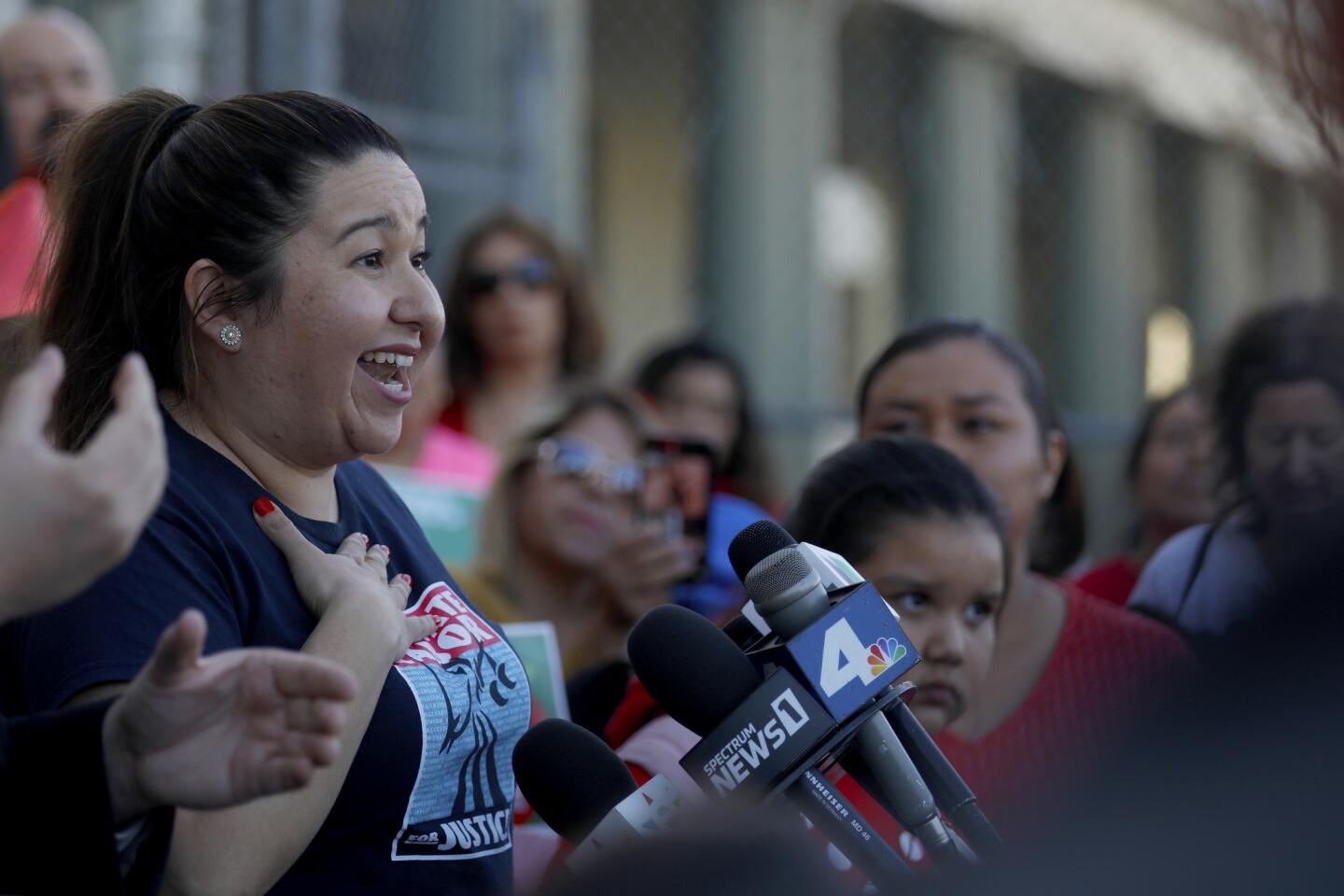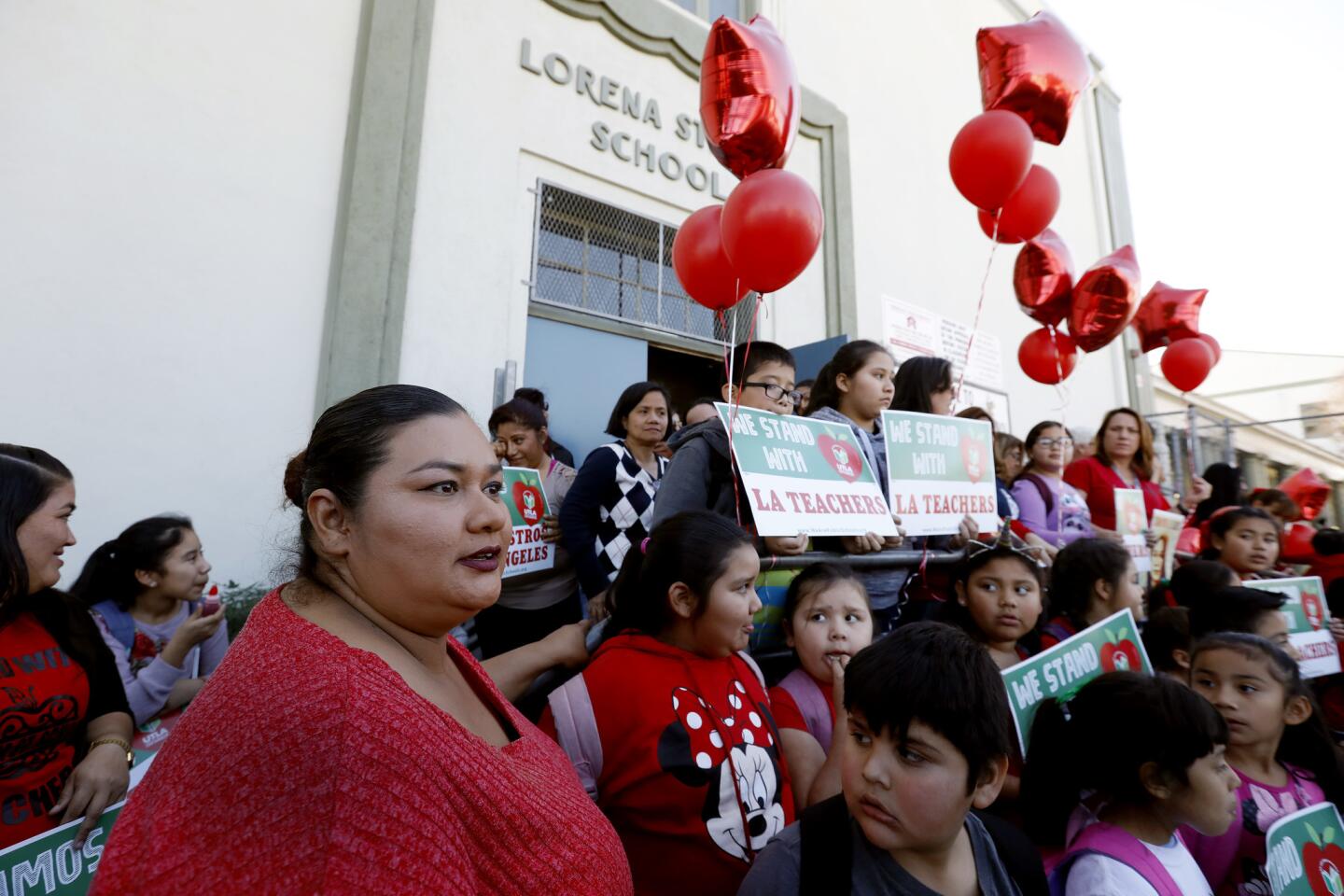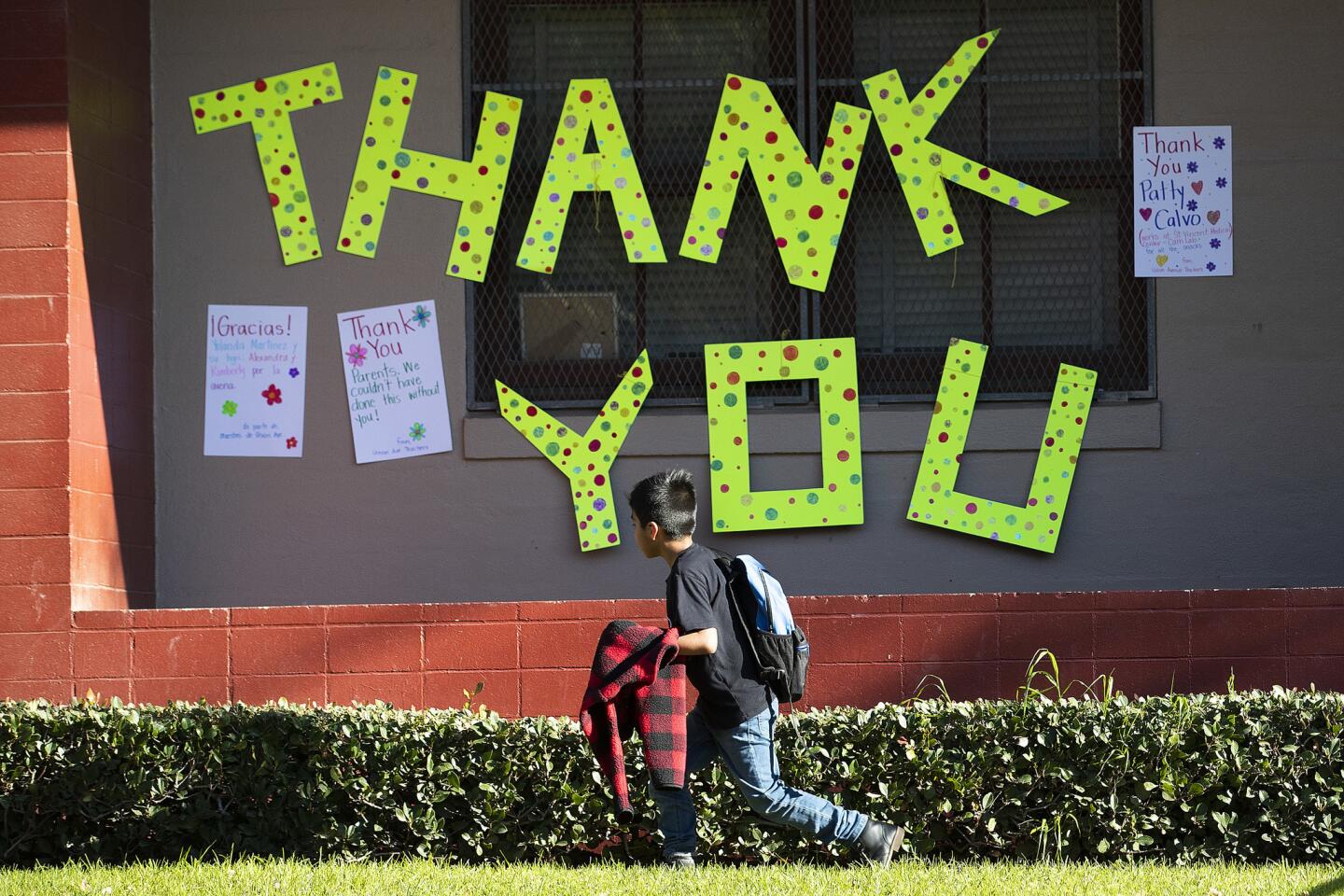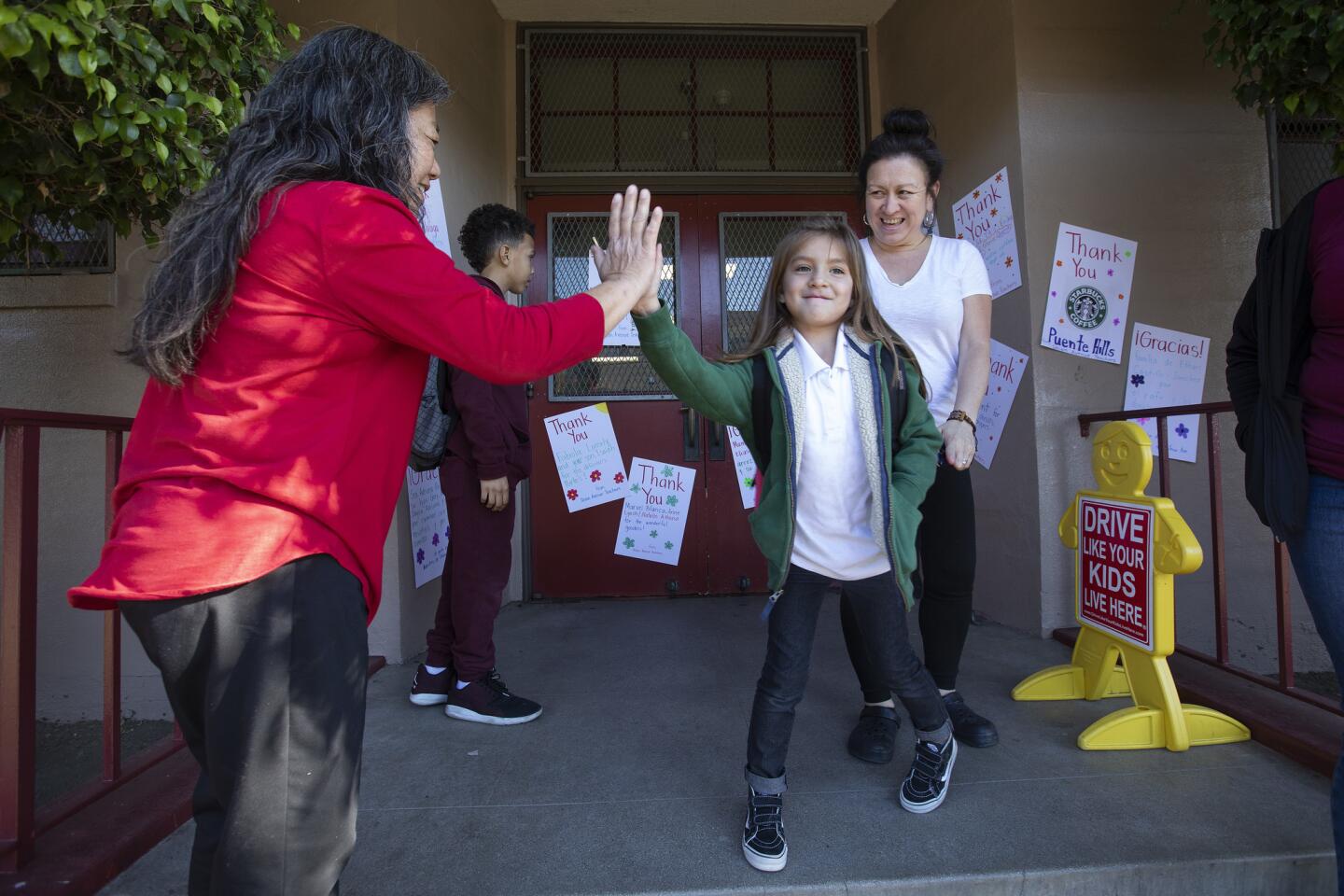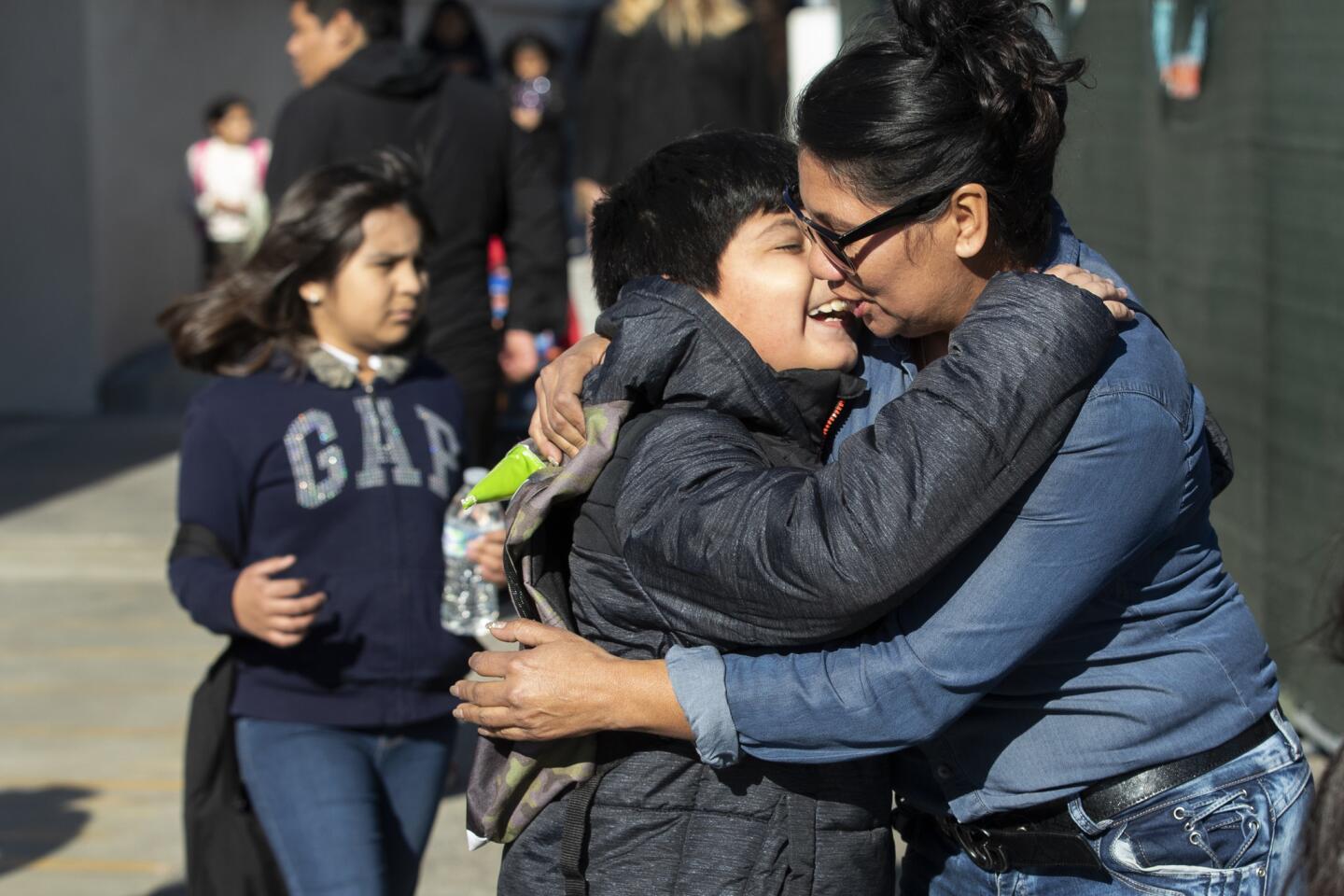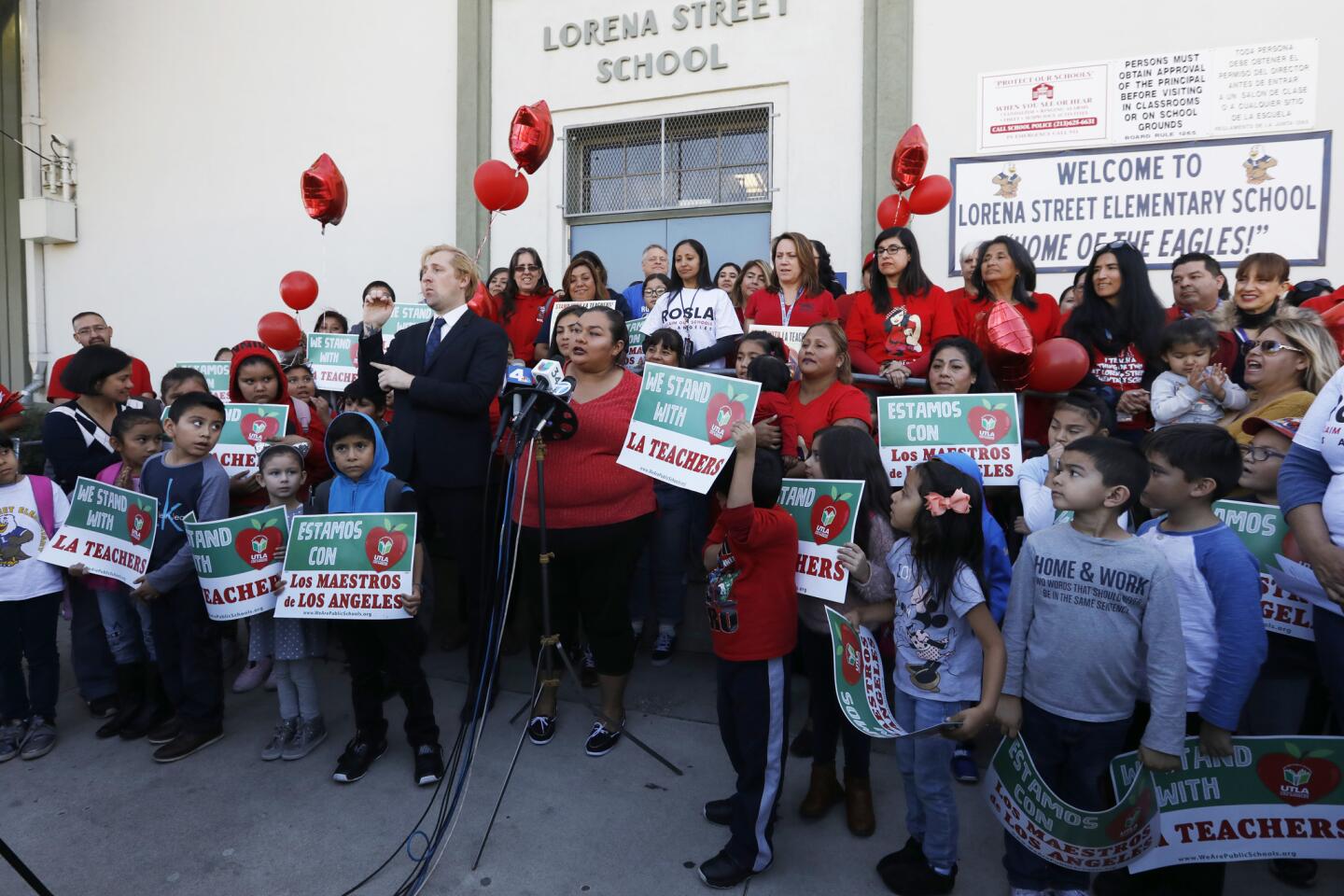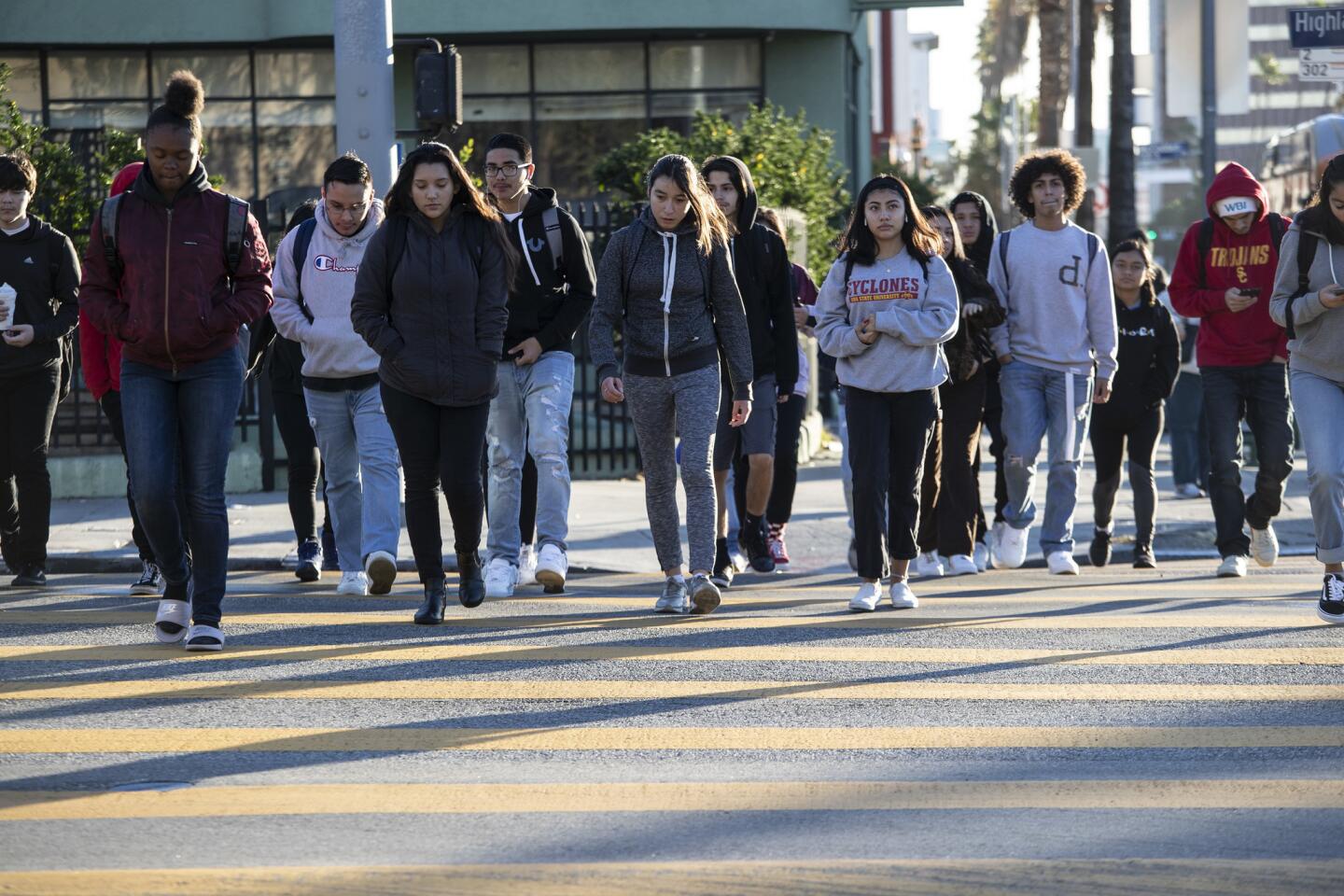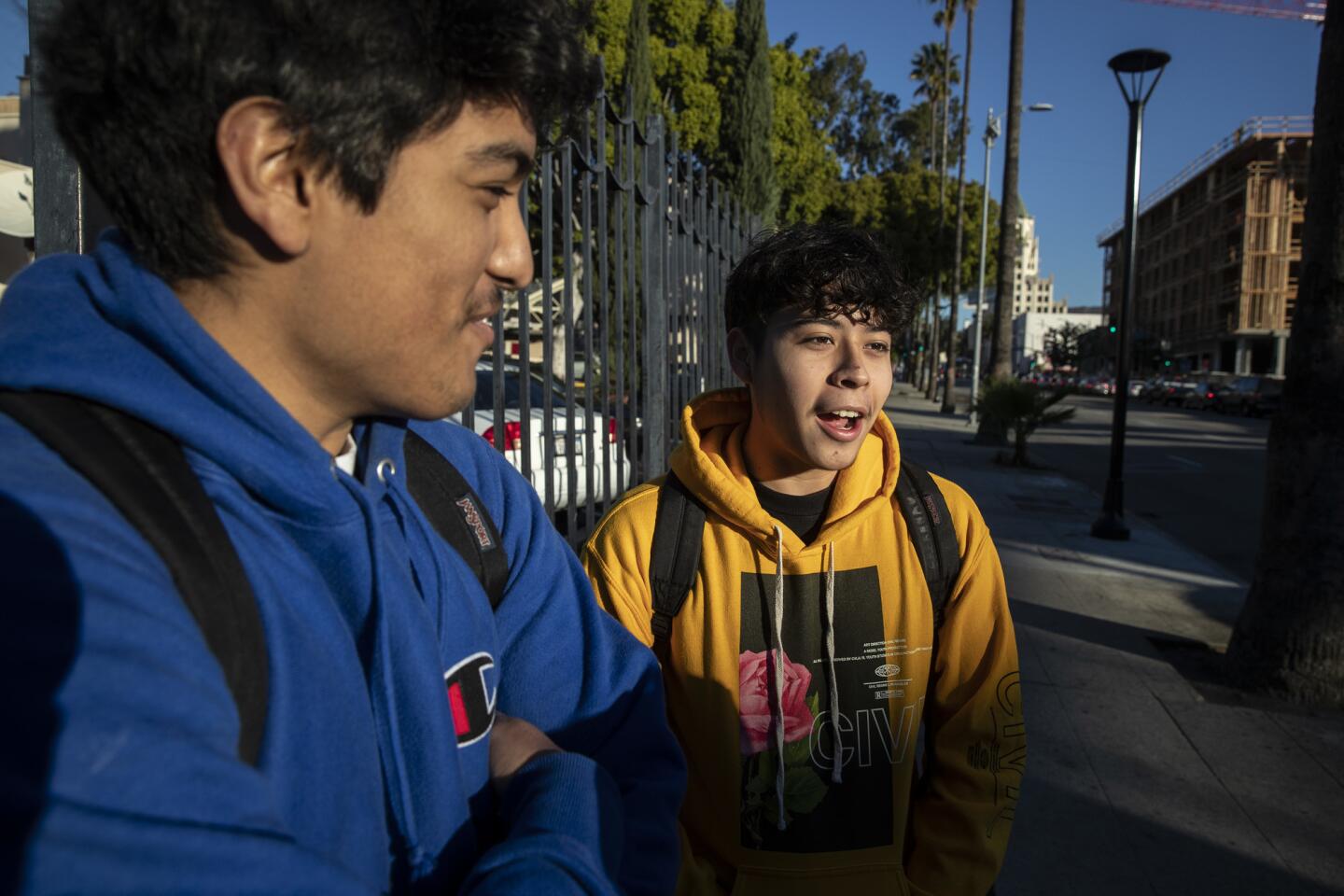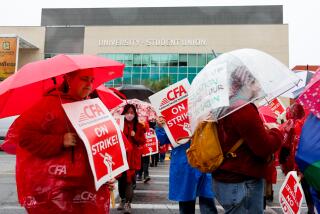Parents, students celebrate return to routine as L.A. teachers end strike, head back to class

L.A. teachers return to work after first strike in 30 years.
- Share via
Los Angeles teachers and union staff returned to school Wednesday morning, hours after voting on a contract agreement with the Los Angeles Unified School District that put an end to a strike that spanned six school days.
The tentative agreement, announced early Tuesday, followed an all-night negotiating session between union and district officials in which the groups sought to hammer out several issues that prompted educators to walk out of classrooms in their first strike in 30 years.
A line of cars stretched outside McKinley Avenue Elementary School in South L.A. as teachers and students arrived for what some expect to be a return to normal after days of uncertainty. One by one, students popped out of cars, vans and SUVs as parents walked along 78th Street holding their children’s hands and giving them kisses before watching the children run inside.
Maria Ramos, 32, watched her 5-year-old daughter from behind a metal fence.
“It makes me feel better to know she’s inside,” she said. “More so now that she’ll be with her teacher.”
Ramos said she supported the strike and agreed with most of the teachers’ demands.
“I’m glad that the strike is over. I know my daughter missed her teacher — even the homework,” she said with a laugh.
United Teachers Los Angeles will give members until Friday to vote on the tentative agreement with Los Angeles Unified School District that ended the strike.
“We are now opening up the voting; we’re extending it up until Friday,” UTLA vice president Gloria Martinez said at a news conference Wednesday afternoon outside Lorena Street Elementary School in Boyle Heights.
The union will have official results on Friday, Martinez said, because “ballots are actually still being counted and because we heard so much from our members who wanted to get to vote but maybe because they were on leave or because they weren’t there yesterday” they were not able to, Martinez said.
The agreement will cost the district $403 million over the next three years “for class-size reduction and for additional nurses, counselors and librarians,” an LAUSD spokeswoman said in an email. The money will come from the district’s reserves, an anticipated increase in state funding and additional county dollars.
Teachers had just hours Tuesday to review the 47-page tentative agreement before voting at their school sites. Chapter chairs collected ballots at eight area meetings at 2 p.m. Tuesday, then returned to their campuses to discuss the agreement with members and run the voting, UTLA president Alex Caputo-Pearl said in an interview Tuesday night. The chapter chairs then eyeballed results and used an app to report them, he said.
Those numbers reported Tuesday night showed about 83% approval, Martinez said Wednesday.
The strike wasn’t easy for parents, especially in working-class neighborhoods where many had to choose between crossing picket lines to send their kids to school or finding childcare to keep them home. For Martin Flores, 30, and Maria Gonzalez, 27, whose three daughters attend McKinley Avenue Elementary in Florence, the strike meant adjusting their routines to keep their girls home for the majority of the week. Thankfully, they said, they already had a system in place.
“I work in the morning, and he works at night,” said Gonzalez, who works as a waitress in Downey.
At home, Flores said, he did his best to keep the children occupied and away from the television. They spent some time playing outside, but every afternoon, the girls — Maribel, 10, Marisol, 7, and Marilyn, 5 — would practice their ABCs and count to 100.
“It was just something to make sure they didn’t forget things,” Flores said.
Despite the loss of school days, Flores and Gonzalez said they supported the teachers and their strike. Now that it’s over, they’re not sure whether the teachers are satisfied with their victory. Gonzalez said teachers complained to her at work about the agreement, saying it wasn’t good enough.
Teachers who formed picket lines outside schools starting Jan. 14 braved several days of rain in a fight for smaller class sizes, more support staff at schools and better pay. The resulting deal, which still needs to be reviewed by the Los Angeles County Office of Education and approved by the L.A. school board, includes a 6% raise for teachers. The agreement also calls for a reduction of one student per class next year in grades 4 through 12, one more the year after and two more the year after that.
“We have started down a real path to address class size,” United Teachers Los Angeles President Alex Caputo-Pearl said Tuesday.
The agreement also includes a commitment to provide a full-time nurse in every school and a librarian in every middle and high school.
Having teachers out of the classrooms also meant a week of departing from routines for students and parents. More than two-thirds of students did not show up for class during the first week of the strike, and attendance remained low Tuesday. A skeletal staff that stayed on campuses struggled to keep students who showed up for school engaged outside of the real-time civics lesson on the sidewalks.
Johnny Villicana and Angelo Angulo, both seniors at Hollywood High School, ambled down Highland Avenue on Wednesday morning in no particular hurry to return to class after spending the last week at home. For the pair, the teachers’ strike felt like less of a learning experience and more of a much-needed vacation.
Still, Johnny, 17, said, “It felt good knowing, by not going to school, you were supporting something.”
Stephanie Santos, a 16-year-old junior at Hollywood High, said teachers “gave up too soon.” She would have preferred them to keep striking in their fight to win steeper reductions in class sizes. Lowering them by just a few students per class, per year, is not enough, she said.
But Lisbeth Zesati, 15, said she’s glad the strike ended and teachers are back in their classrooms. The sophomore had gone to class only once last week — the first day of the strike — and didn’t return until Wednesday.
“You’d literally just sit in an auditorium with, like, 170 people,” she said. “You can’t teach anything like that.”
The strike also affected local vendors who depend on the traffic around schools to make a living. Maria Genche, 60, a tamale vendor at the corner of McKinley Avenue and 78th Street, said last week was one of the hardest she’s faced.
Between the rain and the strike, she said, “I didn’t sell anything. Not even a fly was interested in me.”
Genche said she can make about $20 in an hour on any given school day, selling tamales across from the campus. Despite the economic loss, she supported the teachers. She didn’t know much of what the strike was about but trusted that teachers were doing it for the right reasons — for the students and their education.
At a news conference early Tuesday, Supt. Austin Beutner said the job action had put an important focus on public education and started a larger community conversation.
“Public education is now the topic in every household in our community.Let’s capitalize on that. Let’s fix it,” he said.
“We can’t solve 40 years of underinvestment in public education in just one week or just one contract.”
Times staff writers Howard Blume and Sonali Kohli contributed to this report.
Twitter: @Hannahnfry
More to Read
Sign up for Essential California
The most important California stories and recommendations in your inbox every morning.
You may occasionally receive promotional content from the Los Angeles Times.
